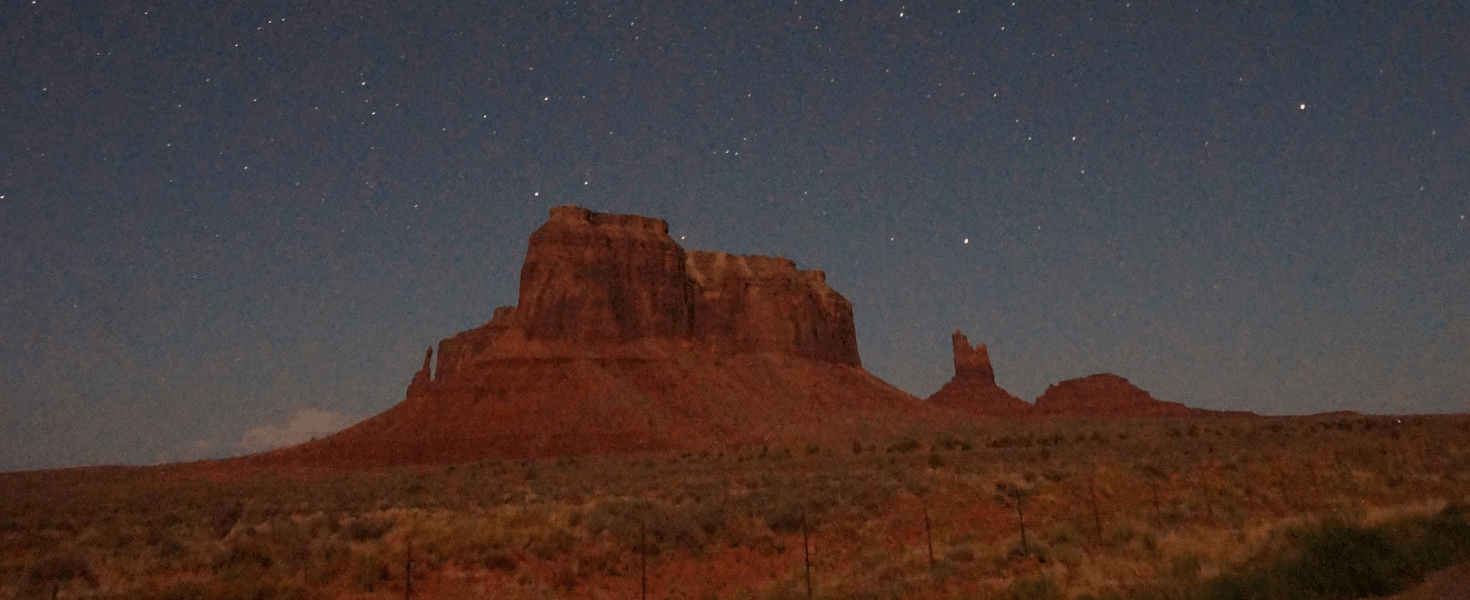Stargazing is one outdoor activity everyone can enjoy yet is often overlooked. So many destinations across the country offer incredible opportunities to see the night sky, but most of the American Southwest is so undeveloped you can stargaze from countless spots across the region.
The best way to enjoy the brilliant stargazing spots the Southwest has to offer is to take a road trip. You can pair days of driving and outdoor exploration with soaking in the starlight and enjoying unmarred nature. If you’re stumped on how to plan a stellar Southwest road trip, here’s a suggested route to hit all the high points in the region.

Where to Begin Your Road Trip
Before beginning any road trip, it helps to have a starting and ending point. The route suggested here begins in Las Vegas, Nevada, and unless you choose to drive all the way to the origin point, it’s recommended that you fly into Las Vegas and rent a car there to complete the loop of this road trip itinerary. (Though be sure to choose a rental deal with unlimited miles, as this route covers over 1,500 of them!)
Las Vegas is a great starting point if you want to spend a few days enjoying the bright lights and experiences of the big city; however, if your goal is strictly stargazing, you won’t find many opportunities in Las Vegas—at least not the celestial kind. Feel free to skip town quickly so you can make the most of your time on your road trip.
You’ll notice that this itinerary forms a loop. From Las Vegas, I recommend making these stops on a counterclockwise loop; but, if you choose to head north to Baker, Nevada, and Great Basin National Park first, start at the bottom of this post and read to the top to understand the route and stops you’ll take.
Springdale, Utah
Springdale might not sound like anywhere special until you realize it’s the town closest to the entrance of Zion National Park and only two hours away from Bryce Canyon National. If you want to visit both, you’ll be able to check off two of Utah’s “Mighty Five” national parks, all of which have been certified as dark sky parks by the International Dark-Sky Association.
If you can swing it, spend the day in Zion and follow up that adventure with stargazing, stay in Springdale one night, and then rise early and drive to Bryce Canyon for the sunrise views the next morning, followed by a day in that park before continuing your drive.

Grand Canyon National Park
The Grand Canyon, one of the world’s greatest natural wonders, is a small detour off the main route, but it’s worth it, especially if you’ve never seen it. During the daylight hours, the Grand Canyon is arguably one of the most impressive sites in the entire United States, even for repeat visitors.
Most visitors spend time along the more easily accessed South Rim of the Grand Canyon, and there are plenty of lodging options in the Grand Canyon Village located within the national park. Best of all, park rangers hold regular astronomy events in the evenings, as Grand Canyon National Park is a certified dark sky park. Even if it is a bit out of the way, you’ll still be able to enjoy great stargazing and amazing views.
Monument Valley
From the Grand Canyon, head northeast toward Monument Valley, located in the Navajo Nation. This iconic landscape has been featured in countless movies through the decades, ranging from old Westerns to Forrest Gump.
There are two main hotels that cater to tourists in Monument Valley; both offer rooms with incredible views of the rock formations during the day. After sunset, make an easy drive away from the bright lights of the buildings to enjoy the stars overhead.


Durango, Colorado
Similar to Springdale, Utah, many people don’t know about Durango, Colorado. However, if you love stargazing, it’s the optimal location because Durango is the closest major town to Mesa Verde National Park, which is where ancient indigenous people of this region once lived in cliff dwellings.
Mesa Verde is open twenty-four hours a day, so you can spend the day learning about ancient cultures, then enjoy a stargazing session before moving on to Durango to rest before continuing your road trip.
Moab, Utah
After the drive from Durango, stay at least two nights in Moab, Utah, no matter how long you take for the rest of this road trip plan. Moab is the closest city to two more of Utah’s Mighty Five national parks: Arches National Park and Canyonlands National Park. Both deserve at least one day each to explore while the sun is up—and at least one night of stargazing too.
Arches National Park is famous for its namesake rock formations, including Delicate Arch, which offers a perfect sunrise hike. Canyonlands offers incredibly scenic vistas that astrophotographers love. You can also attend a ranger-led astronomy program in either park or head out onto one of the trails on your own with a red flashlight to help you see while you hike.
Additionally, Dead Horse Point State Park, a certified dark sky park, is close to Moab. With all the activities and sights to see, you need at least two nights to really enjoy all that the Moab area offers.

Torrey, Utah
From Moab, the next stop is Torrey, Utah, the closest town to Capitol Reef National Park (it’s the final of Utah’s Mighty Five—you can check off visiting all five from your bucket list!).
Capitol Reef is less visited than some other parks in Utah, but it too offers fantastic hiking and jaw-dropping daytime views. At night, those same landscapes become a beautiful foreground past which you can explore the wonders of the night sky. Like the other parks, there are regular ranger-led astronomy programs that you can attend before making the short drive to your overnight accommodation in Torrey.

Baker, Nevada
The final stop isn’t technically in the southwestern United States—it’s actually located in the Great Basin, a huge geographic area that includes much of Nevada and Utah. Baker is the place to spend the night, as it sits right near the Great Basin National Park entrance.
This park is not only home to fascinating caves and some of the world’s oldest trees—i.e., the Bristlecone Pine—and Nevada’s only glacier, but it is a certified dark sky park and perfect for stargazing too. You can certainly squeeze it all into a single day and overnight stop, but I recommend giving yourself extra time to visit this less popular but beautiful national park.
From Baker, the final leg of your drive shows you more of the Great Basin as you return to Las Vegas. After so many nights under the natural starlight, you might find the lights of Vegas a bit bright.



